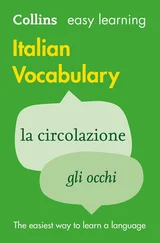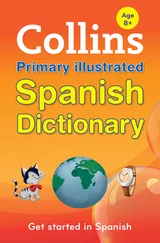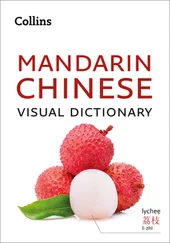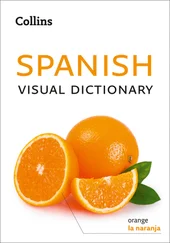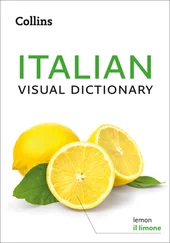Note that in Spanish when you talk about things that you like in general, you need to say the equivalent of I like the gazpacho , I don’t like the ham even though in English it’s I like gazpacho and I don’t like ham .
| Prefierobeber zumo de naranja. |
I'd ratherhave orange juice. |
| Prefieroel vino tinto. |
I preferred wine. |
| Preferimostomar paella. |
We'd ratherhave paella. |
If you have specific dietary requirements, you can sometimes describe them using soy( I’m ).
| Soyalérgico al marisco. |
I’mallergic to shellfish. |
| Soyvegetariano. |
I’ma vegetarian. |
| Soyabstemio. |
I’ma teetotaller. |
You may want to make suggestions to Spanish-speaking companions. One way to do this is to use podemosand podríamos( we can and we could ). podemosand podríamoscome from poder. For more information on poder, see here.
| Podríamossentarnos cerca de la ventana. |
We couldsit by the window. |
| Podríamoscompartir una ensalada. |
We couldshare a salad. |
| Si lo prefieres, podemossentarnos en la terraza. |
We cansit outside, if you prefer. |
| Podemostomar el café cuando volvamos al hotel si prefieres. |
If you’d rather, we canhave our coffee when we get back to the hotel. |
To ask a friend or young person if they would like something, you can use ¿Quieres…?( Would you like…? ). Alternatively, you can use ¿Te apetece…?( Do you fancy…? ) with a singular noun and ¿Te apetecen…?with a plural one.
| ¿ Quieresun café? |
Would you likea coffee? |
| ¿ Quieresprobar un poco de esto? |
Would you liketo try a bit of this? |
| ¿ Te apeteceun helado? |
Do you fancyan ice cream? |
| ¿ Te apetecetomar un licor? |
Do you fancyhaving a liqueur? |
| ¿ Te apetecenunas fresas? |
Do you fancysome strawberries? |
Another way of making a suggestion is to use ¿Por qué no…?( Why don’t…? ).
| ¿ Por qué nopruebas el pescado? |
Why don'tyou try the fish? |
| ¿ Por qué notomas otra copa de vino? |
Why don'tyou have another glass of wine? |
| ¿ Por qué notomamos un café para terminar? |
Why don'twe have a coffee to finish with? |
| No sé qué pedir. ¿ Por qué nodecides tú? |
I don’t know what to choose. Why don’tyou decide? |
You could also try making suggestions about where or what you should eat using ¿Qué te parece si…?or ¿Qué tal si…?, which both mean How about…?
| ¿ Qué te parece sipedimos unas tapas? |
How abouthaving some tapas? |
| ¿ Qué te parece sipedimos una botella de cava? |
How abouthaving a bottle of cava? |
| ¿ Qué te parece sipedimos otra ración? |
How aboutasking for another portion? |
| ¿ Qué tal sivamos a un restaurante gallego? |
How aboutgoing to a Galician restaurant? |
| ¿ Qué tal siprobamos los mejillones? |
How abouttrying the mussels? |
¿LO SABÍAS?
Don’t use unor unain front of otroand otra( another ). To say another glass of wine , for instance, you just say otra copa de vino.
To ask someone what they think, use ¿Crees que deberíamos…?( Do you think we should…? ).
| ¿ Crees que deberíamosreservar mesa? |
Do you think we shouldbook a table? |
| ¿ Crees que deberíamostomar la paella? |
Do you think we shouldgo for the paella? |
| ¿Qué vino crees que deberíamostomar con esto? ¿Blanco o tinto? |
What sort of wine do you think we shouldhave with this? White or red? |
What would you recommend?
| No sé qué tomar de postre, ¿ qué me recomienda? |
I don’t know what to have for dessert. What would you recommend? |
| No puedo decidirme entre la paella y el pescado. ¿ Cuál me recomienda? |
I can’t make up my mind between the paella and the fish. Which would you recommend? |
| ¿ Recomienda ustedalgún plato de la zona? |
Is therea local dish you’d recommend? |
If you’re unfortunate enough to have something to complain about, remember that estaris the verb to use to talk about temporary, changeable qualities. For more on serand estar, see here.
| El café estáfrío. |
The coffee ’scold. |
| El pan estáduro. |
The bread ’sstale. |
| El vino estámalo. |
The wine ’scorked. |
| El filete no estámuy bien hecho. |
This steak isn’tvery well cooked. |
You may want to say that there’s too much of something or that there isn’t enough of something. You can use demasiadoand suficienteto do this.
| Hay demasiadoajo en esta salsa. |
There’s too muchgarlic in the sauce. |
| La verdura tiene demasiadasal. |
There’s too muchsalt in the vegetables. |
| No hay suficientepan para todos. |
There isn’t enoughbread for everyone. |
| No hay suficientescopas. |
There aren’t enoughglasses. |
¿LO SABÍAS?
Don’t forget to change the endings of demasiadoand suficienteto go with the noun they describe. For more information on agreement of adjectives, see here.
Читать дальше

